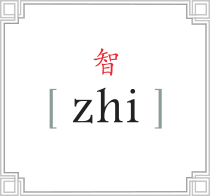Royal Gold
Ingredients: 100% Organic Black loose tea leaves
Exquisite, rare, high-altitude Royal Gold Yunnan tea. This needle tea, along with our Silver needle, is considered to be one of the finest teas in the world. Ours is completely comprised of copper-y, soft, curly buds. The dry leaf (immature leaf; bud) is quite aromatic; deep woodiness, tobacco, and floral hints. Once steeped, the leaf denotes hints of honeysuckle, with an autumnal richness. In the cup we find a deep caramel color and complex aromatics; bing cherry, baked bread, dark chocolate, roasted nuts, and spring blossoms. A long aftertaste leaves an incredible tobacco-y cacao finish. A rare and exquisite tea.
Our Royal Gold from Yunnan Province is the queen of China Black (Red) tea! This top-most grade is comprised entirely of gold-tipped new-growth spring buds that produce a gorgeous dark gold liquor infusion.
After harvesting, the buds are painstakingly hand-sorted, resulting in an exceptionally high-grade tea. When oxidized, these gorgeous buds turn gold rather than black.
This tea evolves through subsequent infusions (yes!). A royal treat. AKA Golden Monkey
Don't forget: this fine tea can be re-steeped at least twice!
A shorter steep yields a superb straight tea needing no milk or sugar.
Water: 208°F | Leaves: 2 tsp per 12 ounce cup | Infusion Time: 3-4 minutes
Basic Steeping Tips
- Use filtered or spring water, whenever possible
- Don’t overboil water
- Remove leaves after recommended time (adjust to taste)
- If you want stronger tea, use more leaves instead of steeping for a longer time
Leaves can be resteeped 2-3 times resulting in various flavor differences. Don’t throw out those leaves until they have given it all up!
Black tea has a class of polyphenols that protect your bones and teeth (help the body from pulling calcium) and is good for your heart. Black tea contains antioxidants and about 1/3 the amount of caffeine as found in a cup of coffee.
The history of tea in China is long and complex. The Chinese have enjoyed tea for millennia. Scholars hailed the brew as a cure for a variety of ailments; the nobility considered the consumption of good tea as a mark of their status, and the common people simply enjoyed its flavor.
Tea was first discovered by the Chinese Emperor Shennong in 2737 BC. It is said that the emperor liked his drinking water boiled before he drank it so it would be clean, so that is what his servants did. One day, on a trip to a distant region, he and his army stopped to rest. A servant began boiling water for him to drink, and a dead leaf from the wild tea bush fell into the water. It turned a brownish color, but it was unnoticed and presented to the emperor anyway. The emperor drank it and found it very refreshing, and cha (tea) was born.














